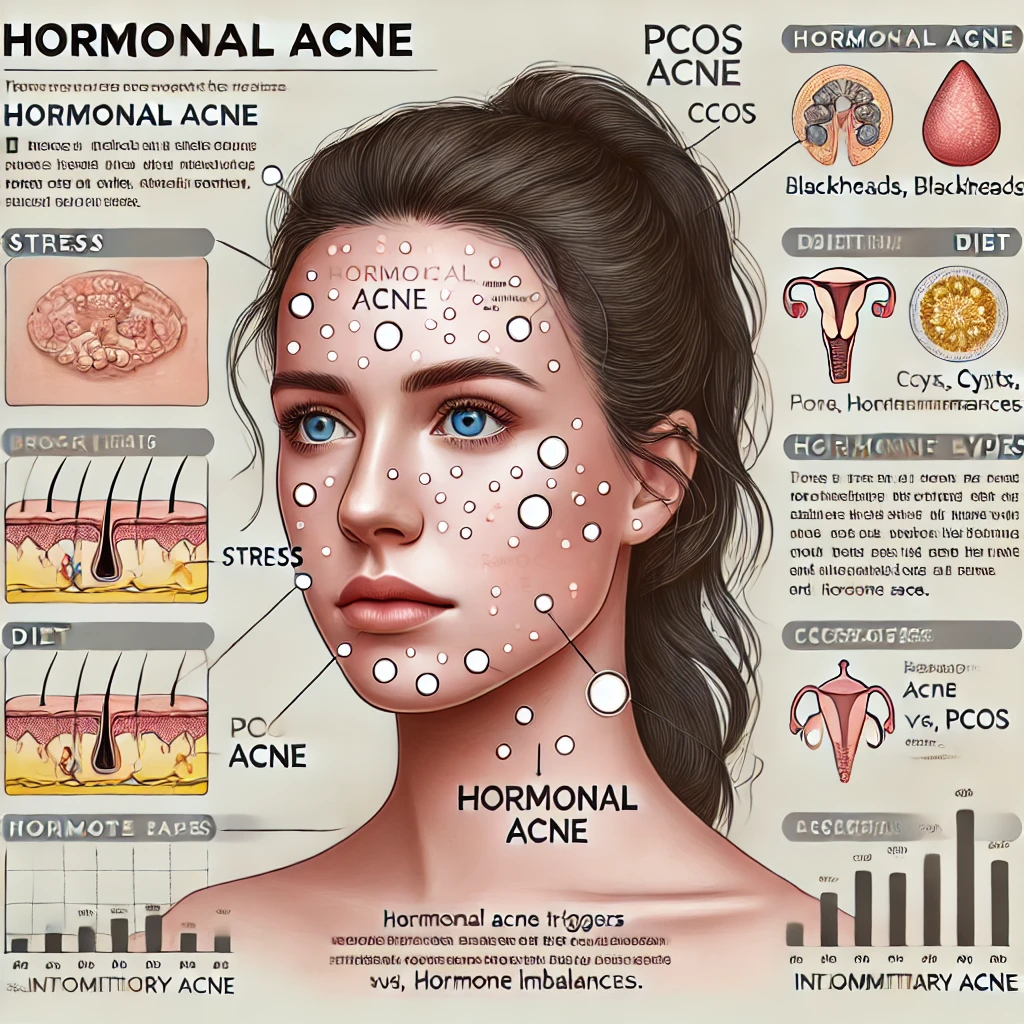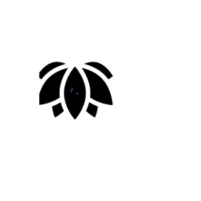Acne is a skin condition that shows up in many forms, but one of the most stubborn and misunderstood is hormonal acne. While acne can result from a variety of factors, hormonal acne is tied to internal hormone imbalances, setting it apart from other types. Understanding the root cause of your breakouts can make all the difference when choosing the right solution.

“Understanding hormonal acne and its triggers can empower you to take control of your skin health.”
What is Hormonal Acne?
Hormonal acne happens when shifts in hormone levels—like androgens—trigger the overproduction of sebum, an oily substance that clogs pores and promotes breakouts.
How to Spot It:
- Where it appears: Unlike acne that often focuses on the T-zone, hormonal acne tends to cluster around the chin, jawline, and lower face. It may even creep onto the neck.
- When it appears: Flare-ups often follow hormonal shifts, like menstruation, pregnancy, menopause, or stopping/starting birth control pills.
- What it looks like: Hormonal acne typically consists of deep, tender cysts and nodules that sit below the skin. It may also feature some stubborn blackheads or whiteheads.
- Recurring cycles: If you notice acne worsening around your menstrual cycle or at specific times, that’s often a sign it’s hormone-related.
What Causes Hormonal Acne?
Hormonal acne doesn’t just pop up randomly—certain factors can aggravate or trigger it:
- Hormone Surges: Hormones like testosterone overstimulate oil glands, which clog pores and invite bacteria.
- Menstrual Cycle: Hormonal dips before a period often worsen breakouts.
- PCOS (Polycystic Ovary Syndrome): This condition raises androgen levels, leading to persistent hormonal acne.
- Stress Levels: Stress increases cortisol production, which can worsen hormonal imbalance and oil production.
- Diet Influence: High-sugar or dairy-heavy diets are linked to worsening hormonal shifts in some individuals.
How Does It Differ from Other Types of Acne?
Not all acne shares the same causes or patterns. Let’s break it down:
| Key Differences | Hormonal Acne | Other Acne Types |
|---|---|---|
| Location | Focused around jawline, chin, and neck | Commonly affects T-zone, back, or chest |
| Timing | Cyclical, flaring around hormonal changes | Can be consistent or triggered externally |
| Appearance | Deep cysts, nodules, and tender breakouts | Blackheads, whiteheads, papules, pustules |
| Main Triggers | Hormones, stress, and diet | Clogged pores, bacteria, friction, or heat |
Breaking Down Other Acne Types
Not every breakout signals a hormonal issue. Here’s a quick guide to other acne types:
- Comedonal Acne
- What it is: Small bumps caused by blocked hair follicles filled with oil and dead skin.
- What it looks like: Blackheads (open pores) and whiteheads (closed pores).
- Common locations: Forehead, nose, and chin.
- Inflammatory Acne
- What it is: Red, swollen pimples caused by bacterial growth in clogged pores.
- What it looks like: Papules (red bumps) and pustules (pus-filled pimples).
- Who gets it: Common in teenagers and adults with oily skin.
- Cystic Acne
- What it is: Severe acne marked by large, painful cysts deep under the skin.
- What it looks like: Tender, swollen nodules that often leave scars.
- Triggers: Bacteria, genetics, or inflammation.
- Acne Mechanica
- What it is: Breakouts caused by friction, pressure, and heat (e.g., masks, helmets).
- Who gets it: Athletes or people wearing tight-fitting gear for extended periods.
Best Treatments for Hormonal Acne
Treating hormonal acne often requires a multi-layered approach that targets both the cause and the symptoms:
- Topical Treatments
- Retinoids: Encourage skin cell turnover to prevent pore blockages.
- Salicylic Acid: Clears out dead skin cells and reduces oil.
- Benzoyl Peroxide: Fights acne-causing bacteria on the skin.
- Hormonal Solutions
- Birth Control Pills: Regulate hormone levels to reduce oil production.
- Spironolactone: A medication that lowers androgen levels, controlling excess oil.
- Lifestyle Tweaks
- Reduce stress through mindfulness, exercise, or better time management.
- Opt for a low-glycemic diet and monitor dairy intake.
- Prioritize consistent sleep and hydration for overall skin health.
- Professional Treatments
- Chemical Peels or Facials: Remove dead skin layers and reduce clogged pores.
- Prescription Medications: Dermatologists may recommend antibiotics or isotretinoin for stubborn cases.
When to Seek Professional Help
If over-the-counter treatments haven’t delivered results or if breakouts are worsening, consider visiting a dermatologist. They can pinpoint the cause of your acne and offer personalized treatments to get your skin back on track.
Final Thoughts
Hormonal acne can feel overwhelming, but understanding what triggers it—and how it differs from other acne types—puts you on the path to clearer skin. Whether it’s balancing hormones, improving skincare routines, or adopting a healthier lifestyle, managing acne is entirely possible with the right plan. If in doubt, seek expert advice to get tailored treatments for your unique skin needs.
